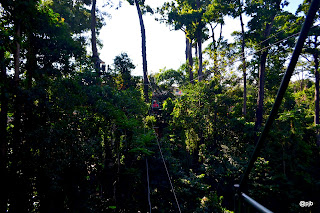Friday, December 21, 2012
Planting Sweet Potatoes
Sweet potatoes are staple food in so many places. It is rich in carbohydrates and is sugary, making it one of the energy foods necessary for you. Now, not all sweet potatoes are yummy maybe because of how they were planted or the planting soil is just so bland. To ensure that you will be able to get tasty and nutritious sweet potatoes, why don’t you try planting sweet potatoes on your own backyard?
But how would you do that? Actually, that is the easy part. You only need to make sure that your planting soil is fertile, has access to a lot of sunshine and water—this you can fake by industriously watering your plantlings—, plus you get a hold of really delicious sweet potatoes planting vines. These criteria would be a lot easier if you have a farmer friend who can provide you with the vines or someone he or she knows who have them.
Preparing your planting bed
The planting bed of sweet potatoes is a bit different from those you can make for other tall growing plants. You have to make miniature mountain-like soil heaps to make one. Or, you can choose to make a long range of this miniature mountain to make a long ‘paddy’ for your sweet potato vines.
Preparing your planting bed will also require a little ‘fertility’ task, especially if your soil is not soft and rich like the ones you see on rice fields because that is basically where these vines will grow best. You have to use do damage your backyard soil pattern, disturb it, and then water it until it becomes a little damp and rich-looking. Once you achieve this state, your planting bed is ready for your planting vines.
How to plant sweet potato vines
While you are still preparing the planting bed of your sweet potato vines, you should also be preparing the vines themselves. You have to let them mature by cutting them up at about a foot long and allow them to grow some roots on them by leaving them exposed to sunlight and water. When both your planting bed and vines are ready, you can start planting early—at least while the sun is not yet up.
The actual deed of planting sweet potatoes is also a little bit different from all other plants. This requires you to pick at least three vines and plant them into one mountain-heap soil. That by three’s way of planting your sweet potato vines allows you to expect at least one of them making it to the fruiting-bearing stage. Also, if all of these vines make it to the bearing stage, that would be the reason for making their planting beds into mountain-like heaps of soil.
Harvest period of sweet potatoes
Normally, farmers harvest their sweet potatoes after 3 months. While you are waiting for this period, you can weed out plants that may rob your plantlings with nutrients, water them up, and keep animals like chickens from eating their leaves. These are preferred but not actually required because sweet potatoes are not actually very vulnerable plants. In fact, you can just wait for 3 months and dig them up for crops. That is, if you can take looking on tall weeds growing on your mountain heaps.
You will be surprised how big your crops will be if they are given enough water and sunlight and the ample time to grow to their largest. After the harvest, clean your crops from sludge and cook the way you want it. Perhaps, Cook of the Hour can give you some recipes on how to cook your sweet potatoes. XXX
Friday, November 16, 2012
Planting Cassava
Cassava
is not as delicate as other plants. It can be planted almost anywhere with
ample supply of water and sunlight. It also needs very little care, and can
even grow without any. But if you want better results, follow the planting
procedure below.
1.
Make
a planting bed. Cultivate the soil in the area you have chosen to plant your
cassava. Remove weeds from the bed and water it everyday to let remaining weeds
grow. Once they start growing, remove them. Do this continuously until you are
sure that there are no more weeds lurking in the coarse soil of your planting
bed. As you know, weeding from a growing plantling is dangerous. You might be
able to remove the small roots that starting to sprout out from the plant.
2.
Prepare
the cassava. Look for a good cassava stalk to use a planting source. Cut this
stalk in as many portions as you can make from it. A good planting portion
should be 8 to 10 inches.
3.
Planting
the cassava. Make slits or planting cuts on the soil of your planting bed.
Insert the cassava into that ‘soil cut’ until the inner end reaches a deeper
area. That should be good enough.
4.
Nurturing
your plant. After a day, small cassava leaves should come out from around the
stalk portion. Cultivate the soil that’s inches from the plant.
5.
Watering
the plant. The reason why you should plant cassava in an exposed soil area of
your lawn or backyard is that they need plenty of water and sunlight. If there
are many things that prevent them from getting what they need, their growth
will not be as good as you want them to be. Trim other plants or trees that
prevent sunlight from penetrating into the plant and soil, and water them
everyday. If properly nourished, you will be able to harvest your planted
cassava after a month or so.
Wednesday, October 10, 2012
Tips to Live By When Gardening
1.
Cultivate
the soil before planting.
2.
Remove
weeds prior to planting.
3.
Once
the small plants are transferred to the planting bed, refrain from removing weeds
as this may damage the roots of your new plants.
4.
Sprinkle
fertilizer at an average of 2 inches from the torso of the new plants.
5.
Water
the plants everyday.
Saturday, July 7, 2012
Tuesday, June 19, 2012
Tuesday, June 12, 2012
Saturday, June 9, 2012
Tuesday, June 5, 2012
Friday, June 1, 2012
Monday, May 28, 2012
Tuesday, May 22, 2012
Friday, May 18, 2012
Tuesday, May 15, 2012
Saturday, May 12, 2012
Wednesday, May 9, 2012
Friday, May 4, 2012
Tuesday, May 1, 2012
Saturday, April 28, 2012
Wednesday, April 25, 2012
Wednesday, April 18, 2012
Saturday, April 14, 2012
Saturday, April 7, 2012
Tuesday, April 3, 2012
Saturday, March 31, 2012
Wednesday, March 28, 2012
Saturday, March 24, 2012
Wednesday, March 21, 2012
Sunday, March 11, 2012
Thursday, March 8, 2012
Monday, March 5, 2012
Thursday, March 1, 2012
Monday, February 27, 2012
Friday, February 24, 2012
Subscribe to:
Comments (Atom)


















































